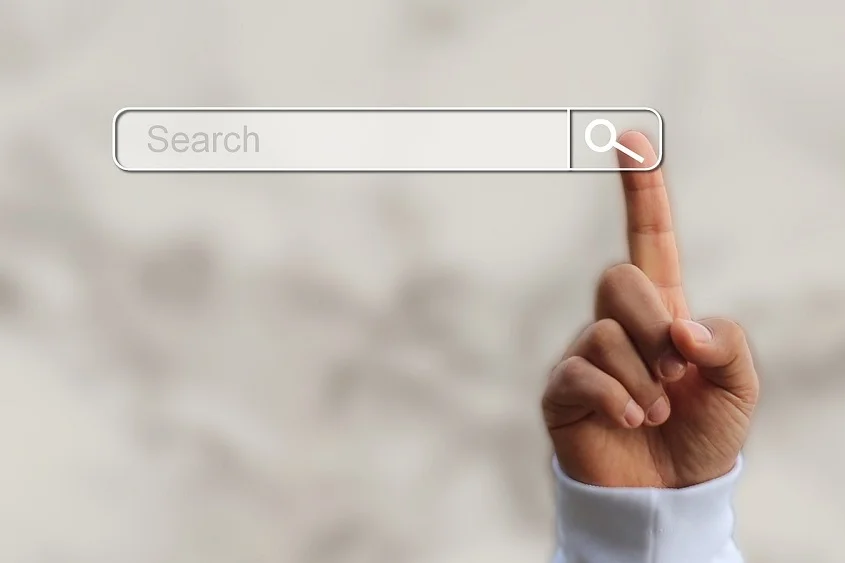Navigating Divided Infringement of Patents: Legal Implications and Solutions
- January 20, 2024
- By Sarita Thomas
- Read 14 minutes
Divided infringement, also known as joint infringement or indirect infringement, refers to a situation where multiple parties collectively perform all the steps of a patented method, but no single party performs all the steps individually. This can occur, for example, when one party provides a product or service that is necessary for another party to perform the remaining steps of the patented method. Divided infringement poses unique challenges in patent law, as it requires proving the coordination and control between the parties involved. In the United States, the law surrounding divided infringement has evolved over time, with courts setting forth various tests to determine liability. These tests include the direct control test, the direction or control test, and the contractual relationship test. Patent holders facing divided infringement issues may seek legal remedies such as filing a lawsuit for direct infringement or asserting indirect infringement claims against the parties involved. In some cases, patent owners may also consider licensing their patents to the parties performing the steps of the patented method to ensure compliance and fair compensation. Overall, navigating divided infringement requires a thorough understanding of patent law and the ability to develop effective legal strategies to protect patent rights and enforce infringement claims.
Types of Divided Infringement
Divided infringement refers to a situation where multiple parties collectively perform the steps of a patented method, but no single party performs all the steps individually. This poses challenges in determining liability for patent infringement and has led to significant legal implications. There are two main types of divided infringement: direct infringement and induced infringement.
Direct infringement: This occurs when a single entity performs some steps of a patented method, while another entity performs the remaining steps. In this case, the entity performing the steps may be held liable for patent infringement.
Induced infringement: This occurs when one entity induces or encourages another entity to collectively perform the steps of a patented method. The inducer may be held liable for patent infringement even if they do not directly perform any of the steps themselves.
Navigating these types of divided infringement requires careful analysis of the specific circumstances and the application of legal principles to determine liability and potential solutions.
Importance of Addressing Divided Infringement
Divided infringement of patents occurs when multiple parties collectively perform all the steps of a patented method, but no single party performs all the steps individually. This type of infringement poses unique challenges for patent holders and the legal system. Addressing divided infringement is crucial because it ensures that patent owners can enforce their rights and protect their inventions effectively.
One of the main reasons why addressing divided infringement is important is that it allows patent owners to hold infringers accountable for their actions. In cases of divided infringement, it can be difficult to identify a single entity that directly infringes the patent. However, by recognizing and addressing divided infringement, the legal system can attribute liability to all parties involved in performing the patented method collectively.
Another reason why addressing divided infringement is crucial is that it promotes fairness and equity in the patent system. If divided infringement is not properly addressed, it can create loopholes that allow infringers to avoid liability by distributing the steps of a patented method among different entities. This undermines the rights of patent owners and can discourage innovation and investment in research and development.
In addition, addressing divided infringement helps to maintain the integrity of the patent system. Patents are granted to inventors to encourage the disclosure of new and useful inventions. If divided infringement is not effectively addressed, patent owners may hesitate to disclose their inventions fully, fearing that they will not be able to enforce their rights against collective infringers. This could hinder the progress of technology and limit the dissemination of knowledge.
Overall, addressing divided infringement is of utmost importance in the patent system. It ensures that patent owners have the ability to protect their inventions, promotes fairness and equity, and maintains the integrity of the patent system. By recognizing the challenges posed by divided infringement and implementing appropriate legal solutions, the legal system can effectively navigate this complex issue and provide adequate protection for patent holders.
Legal Implications of Divided Infringement
Burden of Proof
In cases of divided infringement of patents, the burden of proof is an important aspect that needs to be considered. Divided infringement occurs when multiple parties collectively perform the steps of a patented method, but no single party performs all of the steps individually. This can make it challenging to establish liability for patent infringement, as each party may argue that they are not individually responsible for the infringement. In such cases, the burden of proof falls on the patent holder to demonstrate that the parties involved have a sufficient level of control or coordination to be held liable collectively. This can be a complex task, requiring the patent holder to provide evidence of the relationship between the parties, the level of control exerted by each party, and the overall coordination of the infringing activities. Proving divided infringement can be particularly challenging in cases where the parties are not directly related or where the steps of the method are performed by different entities in different locations. However, various legal solutions have been developed to address this issue, such as the use of joint infringement theories, inducement of infringement claims, and the establishment of agency relationships. These legal solutions aim to provide a framework for determining liability in cases of divided infringement and ensure that patent holders can effectively protect their rights in such situations.
Joint Infringement
Joint infringement, also known as divided infringement, occurs when multiple parties collectively perform all the steps of a patented method. This can present challenges in patent enforcement and liability determination. In the United States, joint infringement requires that one party exercises control or direction over the actions of another party. Proving joint infringement can be complex, especially when the parties involved are independent entities or when the steps of the method are performed by different actors. Courts have developed various tests and theories to address joint infringement, such as the control or direction test, the joint enterprise test, and the inducement theory.
To establish joint infringement, a patent holder may need to demonstrate that there is a relationship between the parties involved, such as an agency relationship or a contractual obligation. Additionally, the patent holder may need to show that the parties collectively perform all the steps of the patented method and that there is control or direction exercised by one party over the actions of another. This control or direction can be explicit or implicit, and it can be established through contractual arrangements, instructions, or other forms of control.
In some cases, joint infringement can be avoided by carefully drafting patent claims to specify that all steps must be performed by a single entity. However, this may limit the scope of the patent and potentially exclude certain parties from liability. Alternatively, patent holders may pursue indirect infringement claims, such as inducement or contributory infringement, against parties who perform some but not all of the steps of the patented method.
Overall, joint infringement poses unique challenges in patent law, requiring careful analysis of the relationships and actions of the parties involved. Patent holders need to consider these issues when drafting patent claims and enforcing their rights.
Induced Infringement
Induced infringement occurs when a party actively encourages or induces another party to infringe on a patent. This can be done through various means, such as providing instructions, promoting the use of infringing products or offering incentives for infringement. Intent plays a crucial role in determining induced infringement, as the accused party must know about the patent and the intent to induce infringement. To establish induced infringement, the patent holder must prove that the accused party’s actions caused direct infringement by a third party.
Induced infringement can be challenging to prove, as it requires demonstrating the accused party’s intent and the actual occurrence of direct infringement. However, courts have recognized various factors that can help establish induced infringement, including the accused party’s knowledge of the patent, their active encouragement of infringement, and any direct benefits they receive from the infringement.
To avoid liability for induced infringement, companies should exercise caution when promoting or encouraging the use of their products. It is essential to conduct thorough patent searches and ensure that the products or services being offered do not infringe on existing patents. Additionally, companies should implement policies and training programs to educate employees about patent infringement and the importance of avoiding induced infringement. By taking these proactive measures, companies can minimize the risk of being held liable for induced infringement and protect their intellectual property rights.
Solutions to Address Divided Infringement
Claim Drafting Strategies
When it comes to navigating divided infringement of patents, claim drafting strategies play a crucial role in ensuring the enforceability and validity of a patent. Divided infringement occurs when multiple parties collectively perform all the steps of a patented method, but no single party performs all the steps individually. This poses challenges in enforcing patents and seeking remedies for infringement.
One effective strategy is to draft claims that cover both direct infringement and indirect infringement. Direct infringement occurs when a single party performs all the steps of the patented method, while indirect infringement occurs when multiple parties collectively perform the steps. By including both types of infringement in the claims, patent owners can strengthen their position and increase the chances of successful enforcement.
Another strategy is to draft claims with alternative steps or substeps. This allows patent owners to cover different scenarios where the steps of the method may be performed by different parties. By providing alternative options in the claims, patent owners can ensure that their invention is protected regardless of how the method is divided among multiple parties.
Additionally, it is important to clearly define the roles and responsibilities of each party involved in the divided infringement. This can be done by including specific language in the claims that describes the relationship between the parties and their respective contributions to the method. By clearly defining these roles, patent owners can establish the necessary elements for proving divided infringement and increase the chances of successful litigation.
In conclusion, claim drafting strategies are essential for navigating divided infringement of patents. By including provisions for both direct and indirect infringement, providing alternative steps or substeps, and clearly defining the roles of each party, patent owners can protect their inventions and maximize the enforceability and validity of their patents.
Joint Infringement Agreements
Joint infringement occurs when multiple parties collectively perform all the steps of a patented method, but no single party individually performs all the steps. This type of infringement can present challenges in determining liability and enforcing patent rights. To address this issue, joint infringement agreements can be used to allocate responsibility among the parties involved. These agreements define the roles and obligations of each party and establish mechanisms for sharing liability. Clear and comprehensive agreements are essential to prevent disputes and ensure effective enforcement of patent rights. In some cases, joint infringement agreements may also involve licensing arrangements, where one party grants permission to the others to practice the patented method. By entering into such agreements, parties can navigate the complexities of joint infringement and mitigate the risk of legal consequences.
Indirect Infringement Claims
Indirect infringement claims are a critical aspect of patent litigation. In such cases, the accused party may not directly infringe on the patent, but their actions contribute to or induce infringement by others. There are two types of indirect infringement: contributory infringement and inducement of infringement.
Contributory infringement occurs when a party sells or offers to sell a component that is a material part of a patented invention, knowing that the component is especially made or adapted for use in infringing the patent. To establish contributory infringement, the patent holder must prove that the accused party had knowledge of the patent and intended for the component to be used in an infringing manner.
Inducement of infringement, on the other hand, involves actively encouraging or promoting others to infringe on a patent. This can be done through advertising, instructions, or providing necessary components for the infringement. To prove the inducement of infringement, the patent holder must show that the accused party knowingly induced others to infringe on the patent and had knowledge of the patent themselves.
Indirect infringement claims can be complex and challenging to prove. However, they provide an important avenue for patent holders to seek remedies when the direct infringer may be difficult to identify or pursue. Patent holders must understand the legal implications and requirements for establishing indirect infringement claims and work with experienced legal counsel to navigate these challenges.
Importance of Proactive Approach
A proactive approach is crucial when it comes to navigating divided infringement of patents. Divided infringement occurs when multiple parties collectively perform the steps of a patented method, but no single party performs all the steps individually. This can make it challenging to enforce patent rights and hold infringers accountable. Proactive measures can help patent holders address this issue effectively.
One important proactive measure is to carefully draft patent claims that cover the entire method, even if it involves multiple parties. By including all the steps of the method in the claims, patent holders can ensure that they have a strong basis to assert their rights against divided infringers.
Another proactive approach is to establish partnerships or licensing agreements with potential divided infringers. By collaborating with these parties, patent holders can ensure that the method is performed as a whole, thereby avoiding divided infringement. This approach can not only help prevent infringement disputes but also create opportunities for mutually beneficial collaborations.
Furthermore, staying updated with the latest developments in patent law and court rulings is essential for a proactive approach. Understanding the legal landscape surrounding divided infringement can help patent holders anticipate challenges and devise effective strategies to protect their rights.
In conclusion, taking a proactive approach is crucial for navigating divided infringement of patents. By carefully drafting patent claims, establishing partnerships, and staying informed about legal developments, patent holders can overcome the challenges posed by divided infringement and ensure the effective enforcement of their patent rights.
Role of Patent Attorneys
Patent attorneys play a crucial role in navigating the complex landscape of divided infringement of patents. Divided infringement occurs when multiple parties collectively perform all the steps of a patented method, but no single entity performs all the steps individually. This poses challenges in enforcing patent rights and determining liability. Patent attorneys are well-versed in patent law and can provide valuable guidance in identifying potential instances of divided infringement and developing strategies to address them.
One of the key tasks of patent attorneys is to conduct comprehensive patent searches and analyses to ensure that a proposed invention does not infringe on existing patents. In the case of divided infringement, patent attorneys can help identify the parties involved in performing the steps of the patented method and assess their potential liability. They can also assist in drafting and prosecuting patent applications to maximize the scope of protection and address potential issues related to divided infringement.
Additionally, patent attorneys can provide legal advice and representation in patent litigation cases involving divided infringement. They can help patent owners assert their rights and seek remedies against infringing parties. Conversely, they can also assist accused infringers in defending against allegations of divided infringement. Their expertise in patent law and understanding of the nuances of divided infringement can be instrumental in achieving favorable outcomes for their clients.
In conclusion, patent attorneys play a critical role in navigating the legal implications of divided infringement of patents. Their knowledge and expertise are essential in identifying instances of divided infringement, developing strategies to address them, and advocating for the rights of patent owners or accused infringers. By leveraging their skills, patent attorneys contribute to the protection of intellectual property and the advancement of innovation.
Future Trends in Divided Infringement Cases
In recent years, divided infringement cases have become increasingly complex and challenging for patent holders and defendants. As technology continues to advance and new methods of collaboration emerge, the issue of divided infringement is expected to become even more prevalent. Courts are likely to face more cases involving multiple actors who collectively perform the steps of a patented method. This trend is particularly evident in industries such as software development, where distributed systems and cloud computing are common. To address these challenges, legal professionals and policymakers are exploring various solutions. One potential solution is to revise patent laws to explicitly address divided infringement and provide clearer guidelines for determining liability. Another approach is to encourage collaboration between patent holders and potential infringers through licensing agreements or joint ventures. Additionally, advancements in technology, such as blockchain and smart contracts, may offer new tools for tracking and enforcing patent rights in divided infringement scenarios. Overall, as the landscape of innovation continues to evolve, it is crucial for stakeholders to stay informed about the latest trends in divided infringement cases and adapt their strategies accordingly.
Sarita Thomas
Latest Blogs
Blog Categories
- Intellectual Property (IP) Strategy (84)
- Intellectual Property Asset Management (IPAM) (17)
- IP Monetization (4)
- IP News (7)
- Patent Drafting (2)
- Patent Litigation (6)
- Patent Prosecution (8)
- Patenting (18)









No comment yet, add your voice below!